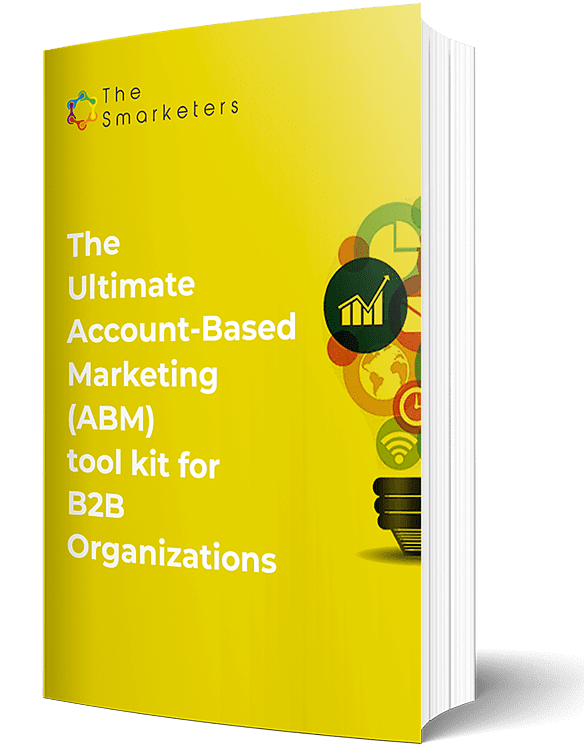The modern system of account scoring enables the sales and marketing teams to identify and target those companies (or, accounts) which are most likely to make a purchase. It helps in prioritizing accounts by determining the value of each potential client. With multiple stakeholders involved in all major buying decisions, organizations are shifting from traditional lead management to a more systematic account-based marketing (ABM) approach. Which raises the obvious question, “how is account scoring done in ABM?” Let’s find out.
The Shift towards Account-Based Marketing
Before delving into its nuances, it is imperative to understand the basic concept of ABM.
Simply put, an account-based marketing approach is a strategy that engages qualified accounts with bespoke messaging and tailored campaigns.
Modern-day businesses are adopting ABM because –
- omnichannel marketing causes leads to flow in from multiple points;
- in large organizations, it is uncommon for a single person to make a major technology purchase.
When it comes to an important buying decision, stakeholders at different levels of the organization are always engaged in the process. For instance, a situation might arise in which the sales representative qualifies Alex as a valuable lead, the marketing team calls up Ron, and the salesperson in the field shows a product demo to Mary. All this is done without realizing that Alex, Ron, and Mary are from the same organization.
Hence, a majority of the leads are lost due to poor follow-up.
To avoid any confusion, it is conducive to follow an account-based marketing approach. This method offers numerous benefits. It –
- aligns the efforts of the sales and marketing team by consolidating the leads as separate accounts;
- assists in delivering consistent messaging and customized content to the buyers within the accounts;
- prevents wastage of resources and loss of potential sales opportunities;
- facilitates the calculation of ROI from each account;
- helps in expanding business through existing account relationships.
 Scoring in ABM
Scoring in ABM
Just like lead scoring, account scoring is done to evaluate the merits of pursuing a potential client. However, it differs from lead scoring in the way it approaches the process.
Account scoring is a holistic approach that takes into perspective the needs of each stakeholder involved in the buying decision of the client. It helps in leveraging additional opportunities within the client’s account that traditional lead scoring fails to capitalize on.
The steps involved in account scoring are as follows –
- Deciding the Ideal Customer Profile (ICP) – The ABM methodology used should focus on companies that fit the Ideal Customer Profile (ICP). This can be in terms of industry, revenue, geography, etc. Also, do these prospective clients share characteristics with existing customers?
- Scoring scheme – Each account is run against a scoring methodology consisting of certain criteria such as the response to emails, advertisements, direct mail, LinkedIn marketing, event participation, website visits, etc.
For example, in the case of email marketing, when a prospective buyer opens the email, the lead may be assigned a score of ‘2’, when he clicks on the in-email links, the score increases to ‘6’, and if there is any response to the email in terms of queries, the score further increases to ‘10’.
Similar is the case with webinars and other events organized, wherein varying degrees of participation (registration, attendance, and questions asked during the event) will be assigned different scores.
Also, the company profile is a crucial scoring factor. For example, it may be decided that target accounts will be mid-size companies with 500-1000 employees. So, companies qualifying for this criterion will be assigned a score of ‘10’, while others will be given a lower score.
- Prioritizing accounts – Based on the scores assigned, the accounts are evaluated to estimate their perceived value. The sales and marketing teams must focus on engaging the most valuable accounts through custom content.
Account scoring is a subjective process that depends solely on the criteria used to select leads.
Few important considerations for account scoring
There are certain important considerations that are to be kept in mind in order to move ahead with building an effective scoring model –
- Account association – The first and foremost thing to focus on is “mapping leads to accounts”. Without this, it is difficult to aggregate the activities of contacts associated with a particular company. The incorrect mapping may lead to erroneous results and loss of opportunity.
- Data quality – Data quality and standardization hold the utmost importance in the process of account scoring. It is important to eliminate duplicate contacts and multiple iterations of a single company to avoid errors.
- Understanding the buyer – When several stakeholders are involved, the role each of them plays in the buying decision must be correctly identified. It is imperative to understand the level and type of engagement each stakeholder takes on. Such information is the backbone of the overall scoring strategy.
- Relevance – Yes, account scoring is a better approach. But is it conducive to implementation when multiple stakeholders are not engaged from the buyer’s side? In such cases, going for account scoring may provide limited value.
To conclude…
As seen above, the benefits of using account-based marketing are manifold, particularly when the buying center of the potential client has several people involved at different levels. In such cases, account scoring helps in identifying the highest revenue opportunities.
The process of implementing ABM consists of a series of steps, right from identifying the list of companies that best fit the product offering, to capturing customer testimonials and measuring the campaign success from lead to close.
Known American author and former dot com business executive, Seth Godin has rightly said, “In a crowded marketplace, fitting in is a failure. In a busy marketplace, not standing out is the same as being invisible.”
Account scoring is a novel approach. It involves careful implementation and changes to the way leads are evaluated and scored when needed.
B2B businesses are rapidly moving towards an account-based marketing approach. And why not? The current climate necessitates this change more than anything else. Now, it is essential to rethink priorities and focus on leads that require the most sales and marketing endeavors.
If you are looking at executing account-based marketing from the ground-up, or need more details about ABM and account scoring, contact us and we will be glad to help you with the same.


 Scoring in ABM
Scoring in ABM










